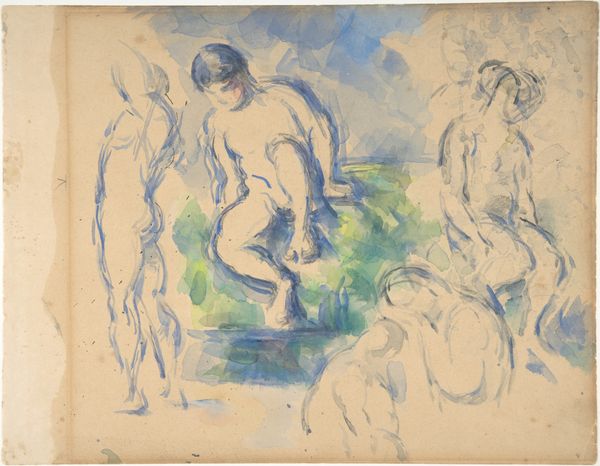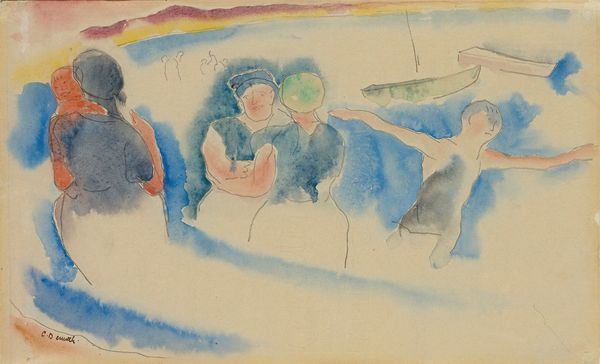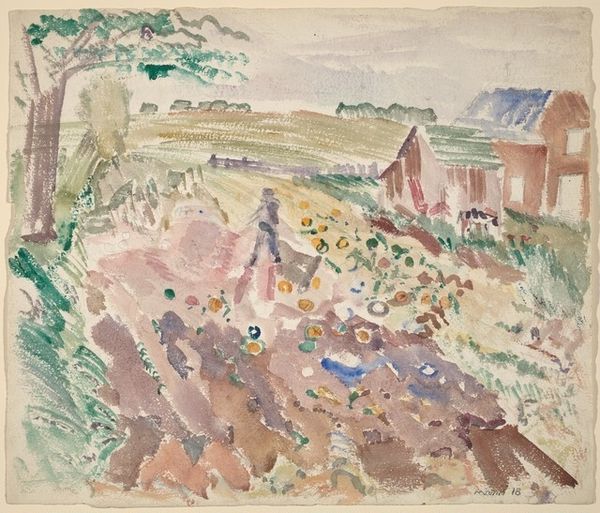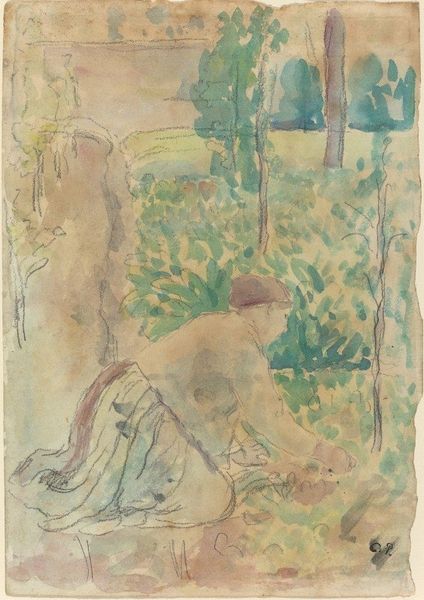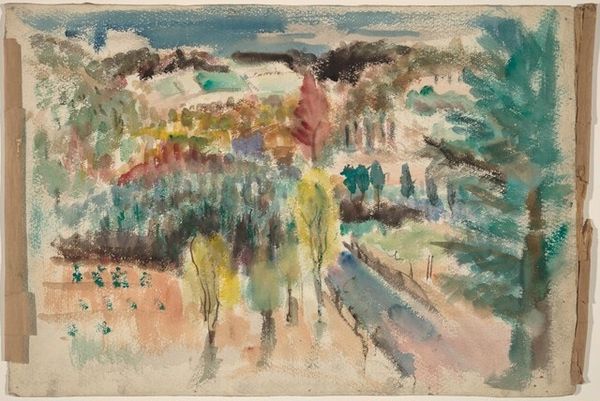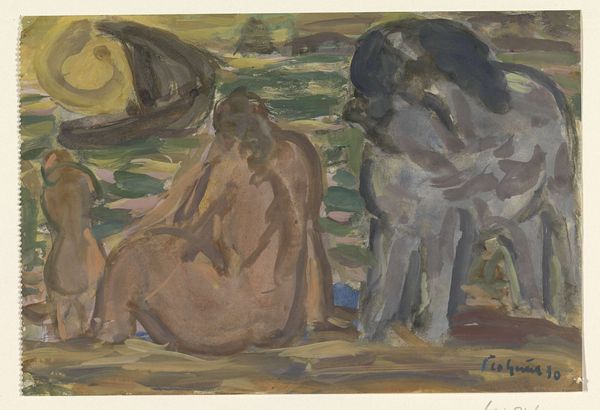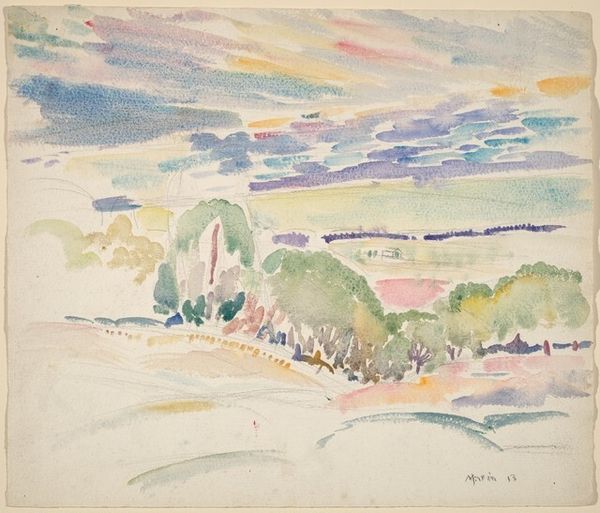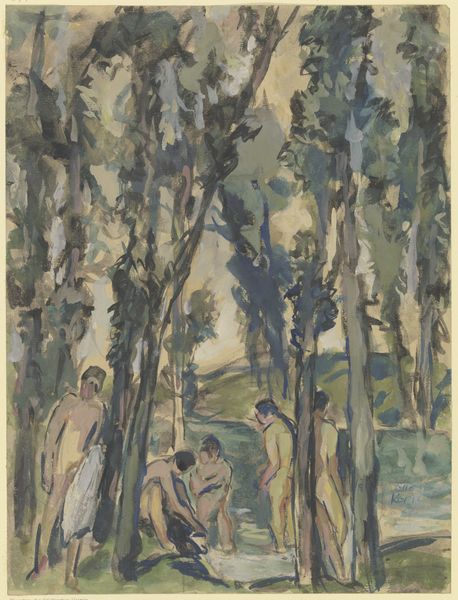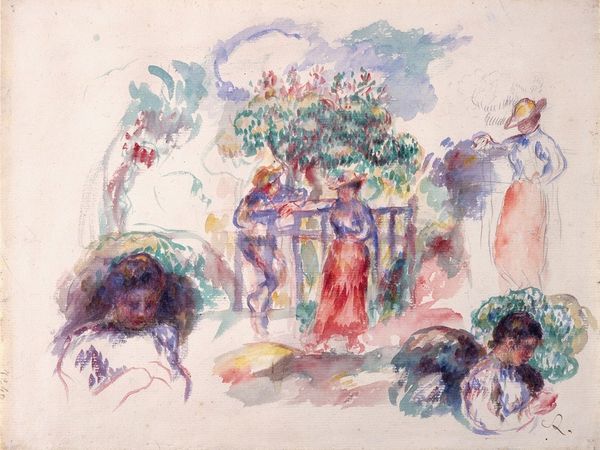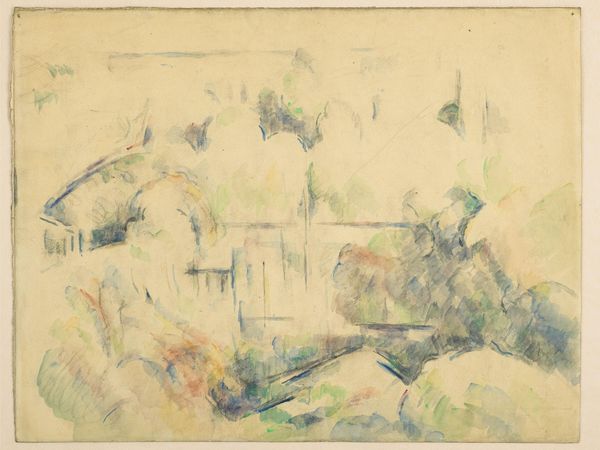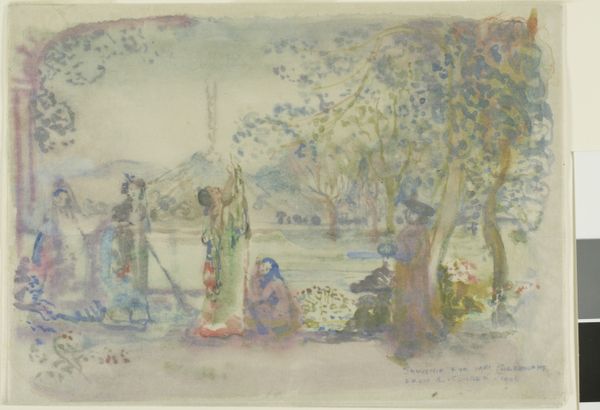
Copyright: Public Domain: Artvee
Curator: Here we have Rik Wouters’ “Figures in the Forest,” created in 1913 using watercolor. Editor: It has a dreamlike, unfinished quality. The figures blend almost seamlessly into the landscape, evoking a feeling of languid summer days and blurred memories. Curator: Indeed. Wouters, working within a Post-Impressionistic framework, often explored the nude figure. Consider the historical context: the female form, frequently the subject of artistic interpretation, is here presented within a modernist lens, reflecting a move towards more liberated representations. How do you see that reflected here? Editor: Looking closely, I’m drawn to how Wouters builds form. He utilizes layered washes of color, predominantly blues, greens, and gentle pinks, which interact and merge on the paper. The transparent quality of watercolor really lends itself to this sense of ephemeral beauty. The choice of this medium suggests a freedom and lightness, almost challenging traditional oil painting's heavy emphasis on permanence. Curator: Exactly. The choice of watercolor democratizes the process. It's less about creating a monument, more about capturing a fleeting moment. This artistic decision reflects broader cultural shifts that embrace everyday life as a source of beauty and meaning, breaking from historical allegories and aristocratic patronage. Editor: It's interesting you say that, because it allows for an intimacy and accessibility not always present in formal portraiture. The quick, fluid strokes capture a naturalism that can be easily translated. However, what statements are being made by presenting nude bodies? Curator: The ambiguity of the figures within the space creates a complex intersection between subject and environment. It pushes us to contemplate how representations of the human form, especially women, have been constructed across history. Editor: Right. I wonder about the labor and availability of art supplies, how Wouters’ specific social and economic reality factored into creating this. Did he choose watercolors due to resource availability, or the potential for capturing outdoor light? Curator: An excellent point. Ultimately, these figures feel suspended, dreamlike. Their positioning in the forest is almost utopian. Editor: Yes. For me, Wouters’s delicate washes have sparked a fresh look at process and its relationship with material constraints and social commentary.
Comments
No comments
Be the first to comment and join the conversation on the ultimate creative platform.

